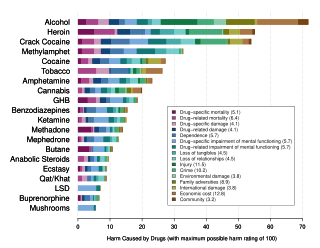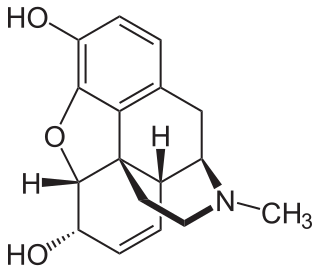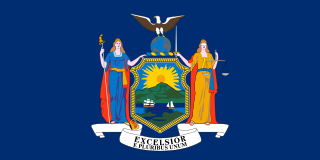The Substance Abuse and Mental Health Services Administration is a branch of the U.S. Department of Health and Human Services. SAMHSA is charged with improving the quality and availability of treatment and rehabilitative services in order to reduce illness, death, disability, and the cost to society resulting from substance abuse and mental illnesses. The Administrator of SAMHSA reports directly to the Secretary of the U.S. Department of Health and Human Services. SAMHSA's headquarters building is located outside of Rockville, Maryland.

Drug rehabilitation is the process of medical or psychotherapeutic treatment for dependency on psychoactive substances such as alcohol, prescription drugs, and street drugs such as cannabis, cocaine, heroin or amphetamines. The general intent is to enable the patient to confront substance dependence, if present, and stop substance misuse to avoid the psychological, legal, financial, social, and physical consequences that can be caused.Citation needed

Opioid use disorder (OUD) is a substance use disorder characterized by cravings for opioids, continued use despite physical and/or psychological deterioration, increased tolerance with use, and withdrawal symptoms after discontinuing opioids. Opioid withdrawal symptoms include nausea, muscle aches, diarrhea, trouble sleeping, agitation, and a low mood. Addiction and dependence are important components of opioid use disorder.
Substance dependence, also known as drug dependence, is a biopsychological situation whereby an individual's functionality is dependent on the necessitated re-consumption of a psychoactive substance because of an adaptive state that has developed within the individual from psychoactive substance consumption that results in the experience of withdrawal and that necessitates the re-consumption of the drug. A drug addiction, a distinct concept from substance dependence, is defined as compulsive, out-of-control drug use, despite negative consequences. An addictive drug is a drug which is both rewarding and reinforcing. ΔFosB, a gene transcription factor, is now known to be a critical component and common factor in the development of virtually all forms of behavioral and drug addictions, but not dependence.
The Substance Abuse Prevention and Treatment Block Grant and the Community Mental Health Services Block Grant are federal assistance block grants awarded by SAMHSA.
The Child Abuse Prevention and Treatment Act of 1988 provides financial assistance for demonstration programs for the prevention, identification, and treatment of child abuse and neglect and to establish a National Center on Child Abuse. Additionally, it identifies the federal role in supporting research, evaluation, technical assistance, and data collection activities; establishes the Office on Child Abuse and Neglect; and mandates the National Clearinghouse on Child Abuse and Neglect Information. It also sets forth a minimum definition of child abuse and neglect.
Phoenix House Foundation was a national nonprofit drug and alcohol rehabilitation organization operating in ten states with 150 programs throughout the United States. Programs served individuals, families, and communities affected by substance abuse and dependency.
An intensive outpatient program (IOP), also known as an intensive outpatient treatment (IOT) program, is a structured non-residential psychological treatment program which addresses mental health disorders and substance use disorders (SUDs) that do not require detoxification through a combination of group-based psychotherapy, individual psychotherapy, family counseling, educational groups, and strategies for encouraging motivation and engagement in treatment. IOP operates on a small scale and does not require the intensive residential or partial day services typically offered by the larger, more comprehensive treatment facilities.

The Oklahoma Department of Mental Health and Substance Abuse Services (ODMHSAS) is an agency of the Government of Oklahoma responsible for providing public health services relating to mental illness and substance abuse.
The Drug Addiction Treatment Act of 2000, Title XXXV, Section 3502 of the Children's Health Act, permits physicians who meet certain qualifications to treat opioid addiction with Schedule III, IV, and V narcotic medications that have been specifically approved by the Food and Drug Administration for that indication.

Substance abuse prevention, also known as drug abuse prevention, is a process that attempts to prevent the onset of substance use or limit the development of problems associated with using psychoactive substances. Prevention efforts may focus on the individual or their surroundings. A concept that is known as "environmental prevention" focuses on changing community conditions or policies so that the availability of substances is reduced as well as the demand. Individual Substance Abuse Prevention, also known as drug abuse prevention involves numerous different sessions depending on the individual to help cease or reduce the use of substances. The time period to help a specific individual can vary based upon many aspects of an individual. The type of Prevention efforts should be based upon the individual's necessities which can also vary. Substance use prevention efforts typically focus on minors and young adults – especially between 12–35 years of age. Substances typically targeted by preventive efforts include alcohol, tobacco, marijuana, inhalants, coke, methamphetamine, steroids, club drugs, and opioids. Community advocacy against substance use is imperative due to the significant increase in opioid overdoses in the United States alone. It has been estimated that about one hundred and thirty individuals continue to lose their lives daily due to opioid overdoses alone.

An opioid overdose is toxicity due to excessive consumption of opioids, such as morphine, codeine, heroin, fentanyl, tramadol, and methadone. This preventable pathology can be fatal if it leads to respiratory depression, a lethal condition that can cause hypoxia from slow and shallow breathing. Other symptoms include small pupils and unconsciousness; however, its onset can depend on the method of ingestion, the dosage and individual risk factors. Although there were over 110,000 deaths in 2017 due to opioids, individuals who survived also faced adverse complications, including permanent brain damage.
The California Department of Alcohol and Drug Programs (ADP) was a California state agency concerned with substance abuse prevention and treatment. Created by the California Legislature in 1978, ADP brought together the Governor's Office of Alcoholism and the California Department of Health's Division of Substance Abuse to form the single state authority for substance abuse prevention and treatment, and is currently within the auspices of the California Health and Human Services Agency. In this capacity, ADP provided leadership and policy coordination for the planning, development, implementation, and evaluation of a comprehensive statewide system of alcohol and other drug (AOD) prevention, treatment and recovery services. As of July 1, 2013, functions of ADP were transferred to the Department of Health Care Services.
National Families in Action was a non-profit organization that was founded in Atlanta, Georgia in 1977. Its mission is to help children succeed by empowering parents to create an academic and social environment where children thrive and are protected from substance abuse and other high-risk behaviors. In November 2021, marking 45 years, the organization announced it would cease operations in January 2022.
Rosecrance is a provider of behavioral health services with addiction treatment programs. Rosecrance serves clients at locations across Illinois, Wisconsin and Iowa.

The Department of Mental Hygiene (DMH) is an agency of the New York state government composed of three autonomous offices:
The American Academy for Addiction Psychiatry (AAAP) is a professional organization and an accredited Continuing Medical Education (CME) provider, based in East Providence, Rhode Island, USA. Its members are specialists in addiction psychiatry and other health care professionals who treat patients with addictions. AAAP provides medical education programs in the field of addiction psychiatry.

The 21st Century Cures Act is a United States law enacted by the 114th United States Congress in December 2016 and then signed into law on December 13, 2016. It authorized $6.3 billion in funding, mostly for the National Institutes of Health. The act was supported especially by large pharmaceutical manufacturers and was opposed especially by some consumer organizations.
SUPPORT for Patients and Communities Act, also known as Substance Use–Disorder Prevention that Promotes Opioid Recovery and Treatment for Patients and Communities Act, is a United States federal law, enacted during the 115th United States Congress, to make medical treatment for opioid addiction more widely available while also cracking down on illicit drugs. This piece of legislation is part of the ongoing conflict to stop and prevent the opioid epidemic in the United States. President Trump signed the bill on October 24, 2018.







